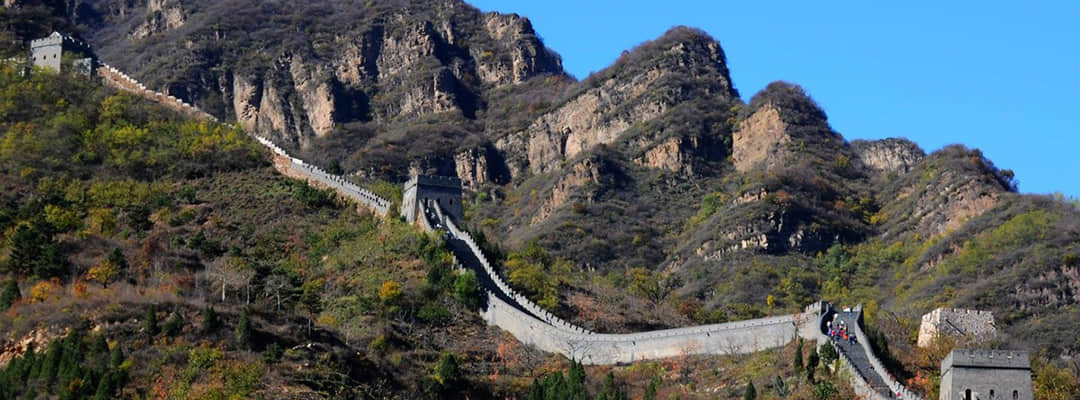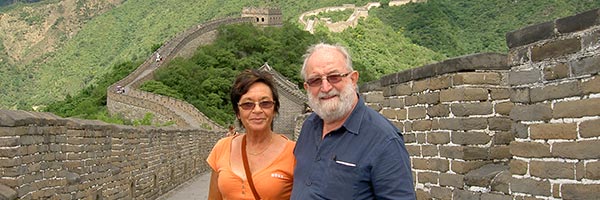How to Travel to Huangyaguan Great Wall?

How to get there from downtown Beijing
- Book a private day trip with us. You will be accompanied in your personal car with a bilingual tour guide. You will enjoy flexible and customized services, and have a great value experience.
- How to get there on your own
By train
Take a train K7783 from Beijing East Railway Station to Jixian Country Railway Station. It takes about 1 hour. The ticket price is CNY 14.5 for a hard seat.
Walk about 50meters to the Jixian Railway Station to take the Limutai tour bus line No.8.
Get off at Limutai Station, and then you should walk forward about 120 meters. You will find another Limutai bus station.
Take a Huangyaguan tour bus line No. 5 to Huangyaguan Great Wall Station.
If the tour lines are not operating, you could charter a mini-bus to the site.
By coach
Take a long-distance bus from Beijing Sihui Bus Station to Jixian. It takes about 1 hour and costs CNY 30. This bus operates from 05:10 to 19:30.
Charter a mini-bus to the site.
The Best Time to go to the Huangyaguan Great Wall
Spring and autumn with mild temperatures are the best times to go to the Huangyaguan Great Wall.
Highlight Spots on the Huangyaguan Great Wall
Widow Watchtower

Located at the end of west Taiping Stronghold, Widow Watchtower is a square tower. Legend has it that twelve women wanted to meet their husbands who were working on building the Great Wall. However, their husbands lost their lives in the construction. They decided to donate their pensions to build this watchtower when they knew the truth. Therefore, the watchtower was named “Widow Watchtower” and is now famous for this story.
Widow Watchtower is a 13 meter tall, two story tower with a beacon. The outer wall of the first floor connects with the city wall. The upper floor is a rectangular room which can accommodate 10 people. The building is divided into four dome halls by four pillars. Dragon’s head sculptures decorate two sides of the roof. Figurines of mythical kylins, phoenixes, and lions are at the four points of the eaves.
The Huangyaguan Pass
The pass is also known as Small Yanmen Pass. The Huangyang Pass was not only a famous pass along the Great Wall built in the Ming Dynasty, but also the only section of the Wall located at Ji county in Tianjin City. The pass connects the Widow Tower on the east and Wangmaoding Mountain on the west, and is 2,152 meters long. It consists of a barbican, an outer city wall and an inner city wall from east to west.
The gates and the towers were built on southern, western and eastern sides of the pass. There is no gate on the northern side for defense. Instead, the Beijige Pavilion was built on top of it, which was later known as the Temple of Guan Yu (a famous general in East Han Dynasty, 184AD-220AD). Standing on the Huangyaguan Great Wall, you will see three defense systems clearly: Phoenix House, the main city wall of Huangyaguan Great Wall, and Bagua Pass City.
Huangya Water Gate

This gate was constructed during the reign of Ming Emperor Yongle, i.e. from A.D. 1403 to 1424. Huangyaguan Water Gate connects Taiping Stronghold on the east and the Huangyangguan Pass on the west. With a length of 75.5 meters and a height of 12.5 meters, it is a famous water gate of the east section. Bridle paths with crenellations are built on the Water Gate, and pieces of artillery are placed on the crenels. There are five arches below the wall with established iron railings. During the wartime, it was used to defend against enemies; and in peace time, it was just a perfect location for taxation. Huangyaguan Water Gate was restored in 1992 as it had fallen into disrepair over a long period of time.
Tips
Entrance fee for Huangyaguan Great Wall is CNY 65. A shuttle bus costs CNY 30 from the Ticket office to the entrance of Taipingzhai and takes about 15 minutes. Walking back from Taipingzhai to the entrance takes about 2.5 hours.
Opening hours are from 07:30 to 18:30. Suggested visiting time: 6-7 hours.
Attractions around Huangyaguan

1 km to the north of Huangyaguan Great Wall is White Snake Scenic Area; 15km to southeast of it is Limutai Scenic Area. Baxianshan Nature Reserve is about 25km to the east of it, and Qingdongling Tombs is about 35km away.
Different Routes Recommended
- Historical and Cultural Tour
Go through the entrance of the ticket office, and you can visit the Decorated Archway, Huangyaguan Pass, Bagua Pass City, Eight-Trigram Maze, Longevity Park, Museum, Forest of Stone Steles, Pine Garden, and Zhengguan Square, and then visit the Great Wall from Beijige. - Adventure tour
Arrive at Huangyaguan Pass Square from the entrance of the ticket office. Climb up to Beijige Pavilion, and walk towards the west, and you will be at the section being built during the North Qi Dynasty after passingthe Huangya Sky Ladder. This section is the biggest and the best-preserved sectionof Huangyaguan Great Wall. - Leisure Tour
Enter the Wall from the entrance to the Taipingzhai ticket office and climb on the barbican to enjoy a unique view of the Great Wall. You will visit a sculpture with an ox-head and horse-face shape, the Widow Watchtower, the Pier from the North Qi Dynasty, Water Pass Great Wall and Beijige Pavilion. Go downhill at the Huangyaguan Pass to visit Eight-Trigram Maze, Zhengguan Square, Pine Garden, Forest of Stone Steles, Museum, Longevity Park, Eight-Trigram Maze, Huangyaguan Pass, and the Decorated Archway.
We recommend that you stay in a farm house around Huangyaguan for one night as it is quite a rush to do it all on a day trip.
Drop us a line and we'll connect you with the top China expert in no time!
